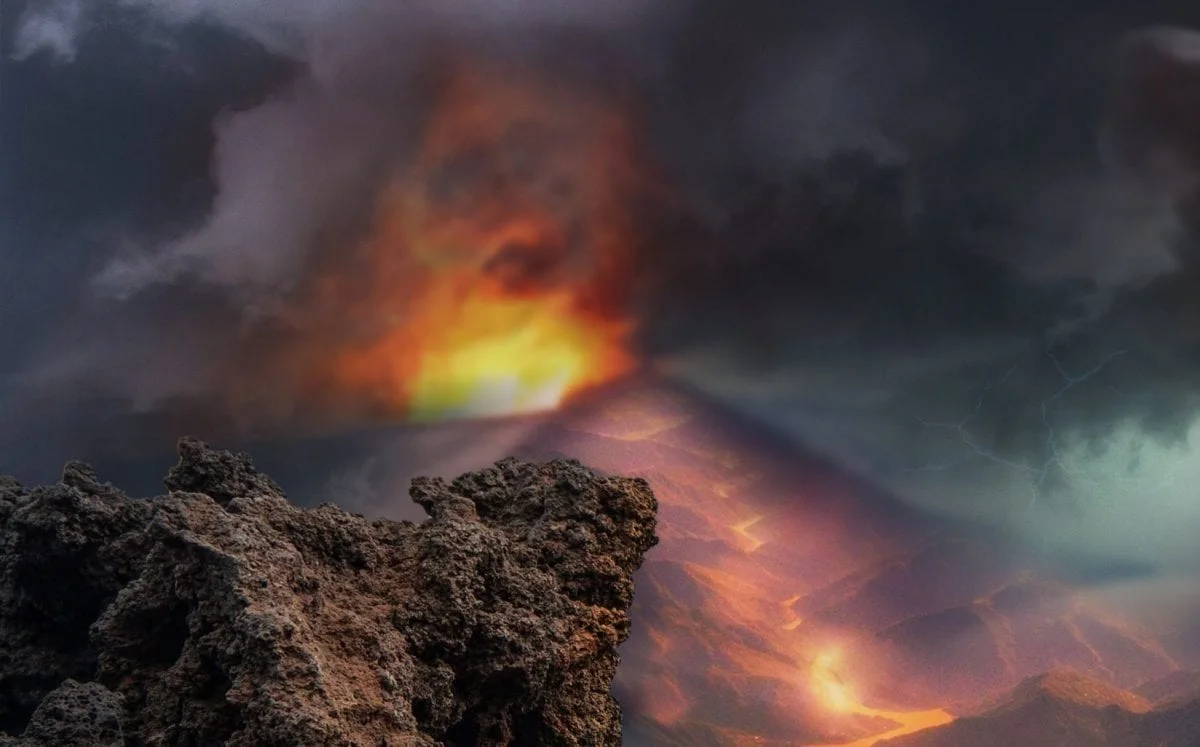Britain is known for being geologically stable and tectonically quiet, the last volcanic eruption was around 60 million years ago when Britain was moving away from the tectonic boundaries and hotspots.
Throughout Britain, volcanism is evident across the geology of the mountains in the Lake District, Snowdonia, Northern Ireland, Southern Scotland, Western Scotland, the Scottish Isles, and even parts of Dartmoor.
Just 81 miles from London is the Village of Warboys in the Huntingdonshire district of Cambridgeshire whose history dates back from the Iron Age. The geological history, however, goes back over 300 million years to a period when Warboys was the epicentre of volcanic activity.
In the 1960s, work by the British Geological Survey (BGS) detected magnetic and gravity anomalies due to variations in the physical properties of underlying rock formations. This led to an exploratory borehole being drilled to try to explain the source of the mysterious magnetic anomaly.
The borehole drilled through glacial deposits dating back 20,000 years into Oxford Clay, dating from the Jurassic period around 150 million years ago when the region was covered by a shallow sea. The team continued to drill through various sedimentary layers from the Middle and Lower Jurrasic until they encountered deposits of igneous rocks at 171-217 metres. Igneous rocks are a type of diorite, formed by crystallisation of minerals from molten rock (magma) normally found in continental volcanic areas close to subduction zones.
This suggested that the BGS team had stumbled across the remnants of an ancient volcano or some kind of volcanic activity somewhere in the Cambridgeshire area, probably from the period of the Hercynian Orogeny around 300 million years. The Hercynian Orogeny was a period of major continental deformation that effected Southern Britain when two continental plates were colliding.
In the 1990s, the Department of Earth Sciences at Cambridge University carried out a Geophysics course for Physics undergraduates at Warboys to try and provide further data as part of their field studies. The team used gravimeters to measure the variations in the gravitational field around Warboys that would reveal changes in the density of the buried igneous rock.
After compiling their data, the survey showed a gravity body of 30 gravity units (a gravity unit is equal to a change in gravitational acceleration (g) of one million of a metre per second, or 1 part in 10,000,000 of the average value of (g). What the team had discovered, was the dense core of an extinct volcano right beneath Warboys at the site of a former Royal Air Force base.
They then proceeded in carrying out a Magnetic Survey using a Proton Magnetometer and a Seismic Survey to profile the volcanic cores dimensions and density. They concluded that the core extends for up to 3 miles horizontally and 300-600 metres vertically.
The research team speculated, that around 300 million years ago during the Hercynian period, the volcano would have been active and covered several miles at its base. Over millions of years, the land surface around the volcano eroded leaving just the hard diorite core. During the Jurassic period, this sank beneath a shallow sea and was buried by deposits of sediment and later around 20,000 years ago glacial till.
So should ever find yourself passing through the tranquil village of Warboys, just imagine the geological wonder buried deep beneath your feat….a Volcano!
Header Image Credit : Public Domain





